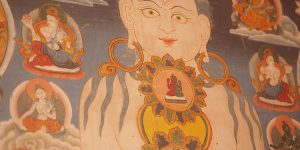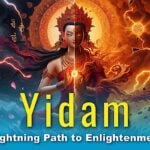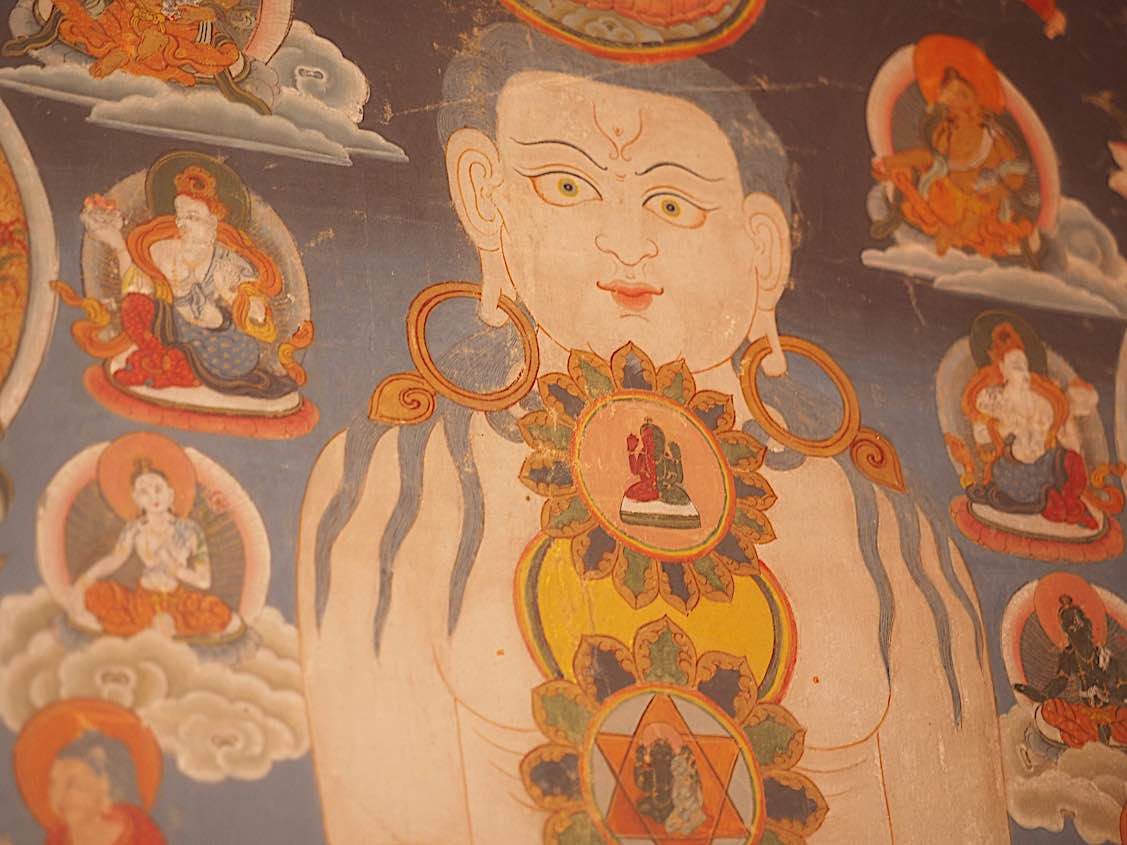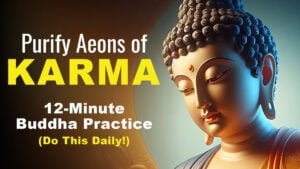Dharma and the Tao: how Buddhism and Daoism have influenced each other; Why Zen and Taoism can be complementary
Buddhism and Daoism have co-influenced each other over hundreds of years in China. Although Buddha lived from 563 B.C. to 483 B.C., the founder of Daoism, Lao-Tzu was thought to live in the 6th century BCE. Buddhism and Daoism didn’t encounter each other until Buddhism entered China around the third century BCE — and since that time (arguably) they have influenced each other as both flourished across China.
Many concepts taught by Buddha and Lao-Tzu are comparable and complementary. Especially, with the later entry of Ch’an Buddhism — Zen Buddhism in Japan — as introduced from India by Bodhidharma, the two philosophies seemed harmonious. They were certainly not identical, but they rarely seemed at odds in method and many philosophical beliefs.
By Lee Clarke
[Biography on bottom of feature]

Taoism a major philosophical tradition in China
Taoism (or Daoism) is historically one of the main philosophical traditions and religious of China and it is based on the idea that the Dao (The Way) is the fundamental principle upon which order and harmony in the universe is based. The term has always proven difficult to define, even within its original Chinese context but a common definition is — according to BBC Religions: What is the Tao? — defined as follows:
The Tao is not a thing or a substance in the conventional sense.
It cannot be perceived but it can be observed in the things of the world. Although it gives rise to all being, it does not itself have being.[1]
The idea is that the Tao pervades everything and in order to live a good and virtuous life, we have to live in harmony with it. The concepts of Tao and Shunyata (in Buddhism) are not the same, but they are similar enough — complimentary enough — to comfortably co-exist.
The main way to do this is expressed through the Chinese term “Wu Wei” (non-action). This doesn’t mean lazily not doing anything but instead means living in accordance and harmony with nature and the natural flow of things, not trying to impose ourselves on and thus disrupt, this natural state.[2]
Buddhism meets Taoism in the 3rd Century BCE
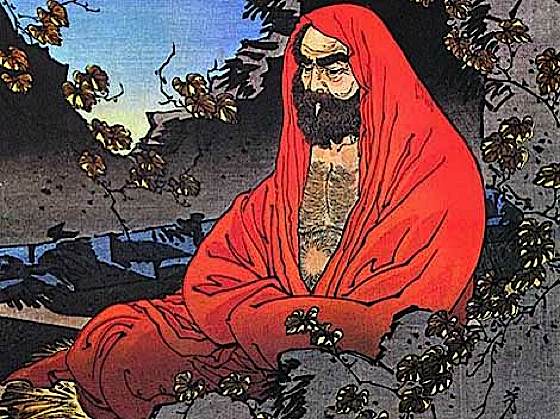
The Daoist tradition was already present in China when Buddhism first entered the country over the border from neighboring India around the 3rd Century BCE.
The two religions came to heavily influence each other in China, and this Daoist influence on Buddhism — after the two started to interact with one another — helped shape history and philosophical belief in the region for centuries.
Later, when the Buddhist Sage Bodhidharma brought the Chan school of Buddhist thought (Ch’an, Cha’n) from India, over time it was influenced by the Chinese faiths already present. This article will therefore explore a little of the history of the influence of these two traditions, some similar concepts between the two, and also touch upon what Buddhists can learn from the Daoist mindset and doctrines, though this article will only cover a little of what’s undoubtedly a big topic.
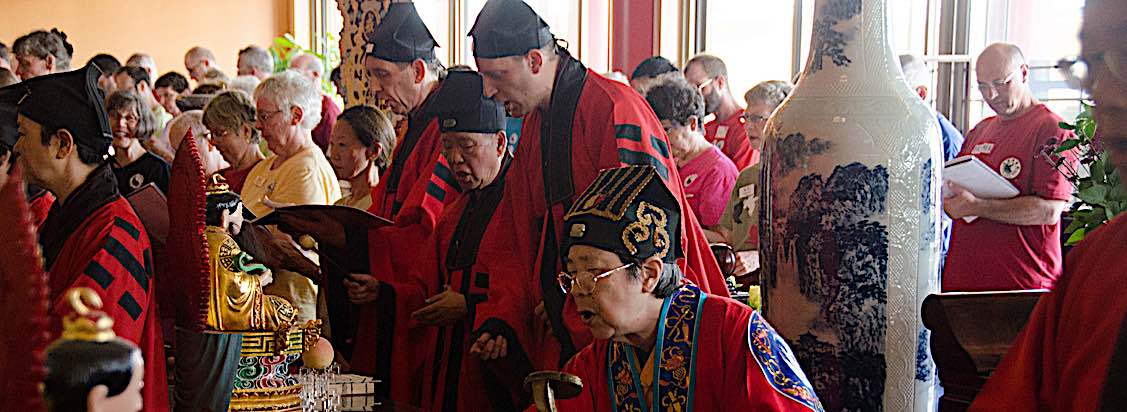
Buddhism introduces karma and rebirth
Although China and India border one another, some aspects of Buddhist thought when it first came to China were alien to the Chinese mindset, mainly the ideas of Karma and Rebirth. (Tao te Ching, by Lao Tzu refers more to longevity and immortality.) The two did have enough similarities, according to some accounts, to lead some Chinese people to view Buddhism as an Indian version of Daoism, especially with the translations of Sankrit and Pali Sutras to Chinese. For example, “path” and Dharma were often translated as “way” and Dao. Ninian Smart explains this process:
The Task of translation was great, and often because of its suitability Taoist language was used, or otherwise some rather unintelligible phonetic attempts to render Sanskrit words. But Buddhism described itself as a path or Tao, it had its immortal being the Buddha, it practised acting by not acting. It is perhaps not surprising that Chinese Taoists, prejudiced somewhat against what was after all a foreign religion…should see it as a garbled version of the ancient teachings of the famed Lao-tzu… [3]

However, Buddhism was there to stay and it would have a massive impact on Chinese culture in the following centuries. Taoism, Buddhism, and indeed Confucianism were lived together — mostly in harmony (with the notable exception of the Anti-Buddhist persecution by Tang Emperor Wuzong in 845 AD).
One reason Buddhism freely spread was that it was more philosophy than religion, and it rarely imposed itself on indigenous religions; instead it often complimented them and even evolved culturally to suit the region.
When Boddhidharma travelled from Indian to China with Ch’an (which is a Chinese translation of the Pali word “Jhana” or Sanksrit “Dhyana” meaning ‘meditation’) Buddhism would similarly enrich the native culture – and be enriched by it in return.
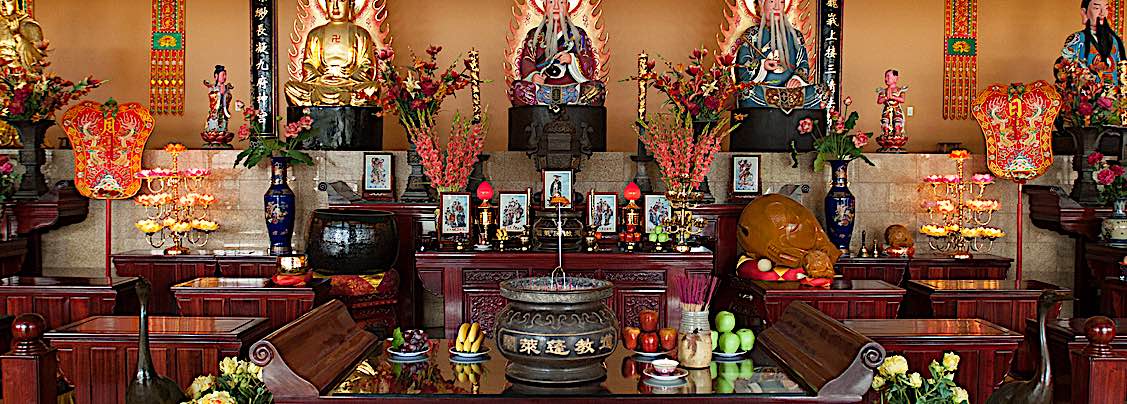
The founder of Ch’an was Indian monk Bodhidharma who described the teaching of the newly founded school as thus:
A special transmission outside the scriptures, No basis in words or writing. Direct pointing to the mind of people. Insight into one’s nature and attainment of Buddhahood.[4]
Zen Koans and Taoist teachings
In a previous article on the Zen tradition on Buddha Weekly, I pointed out that Zen — the Japanese form of Chan — seeks simplicity in the path to enlightenment; to not impose concepts on itself and to simply “flow”. This is very similar to the Daoist concept of ‘Wu-Wei’. This can also be seen if one examines some of the Zen Koans, illogical riddles designed to achieve instant awakening.
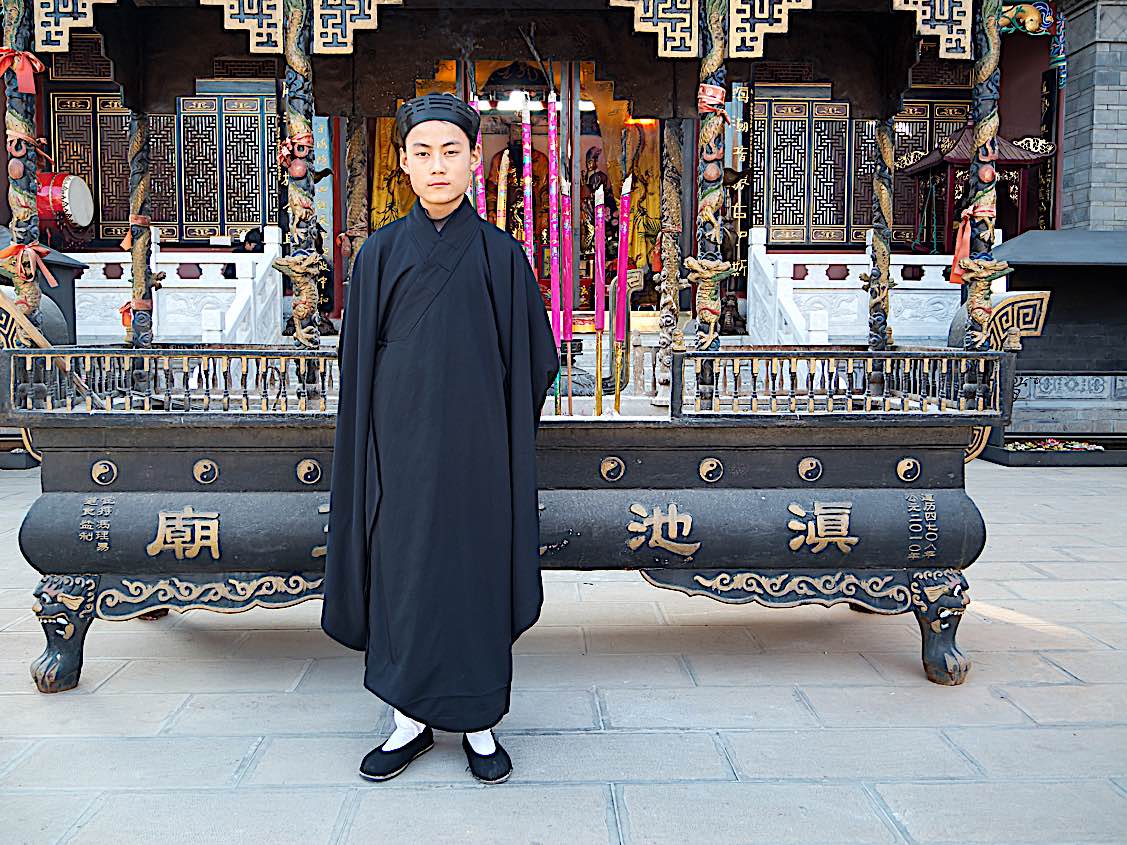
For example, in one, a university professor visits a Zen master in Japan to learn about what Zen is, the master starts to make him a cup of tea, but pours the water until the cup overflows:
“The professor watched the overflow until he could no longer restrain himself: ‘It is overfull, no more will go in!’
‘Like this cup’ Nan-In said ‘You are full of your own opinions and speculations. How can I show you Zen unless you first empty your cup?’. [5]
We find a similar thing in the main spiritual text of Taoism, the Tao Te Ching (from the 6th century BCE) which offers a similar metaphor in verse:
“Fill your bowl to the brim and it will spill.
Keep sharpening your knife and it will blunt…
A good traveller has no fixed plans and is not intent upon arriving.
A good artist lets his intuition lead him wherever it wants
A good scientist has freed himself of concepts and keeps his mind open to what is.”[6]
Empty yourself of pre-existing notions
This concept of “empty yourself” of all pre-existing notions in order to truly understand what it is trying to convey is nearly identical in Doaism and Chan Buddhism (Zen).
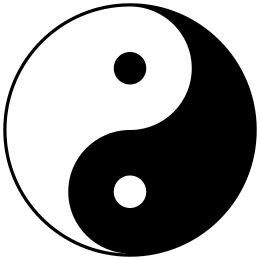
Similarly, Daoist doctrine can feel familiar to Buddhists on doctrines of Emptiness (Sunyata) and Interconnectedness (Oneness, “interbe” as Zen teacher Thich Nhat Hanh puts it.)
The doctrine of Sunyata or ‘emptiness’ is often mistaken by Westerners to be a nihilistic concept — largely because the English word Emptiness is not the best translation of Shunyata. Like the Daoist concept of Tao, Shunyata cannot be reduced to a simple one-word definition, and it is more about inter-connectedness than nothingness — in Buddhist doctrine, Dependent-Arising. As Buddhist writer, Lewis Richmond says:
The Heart Sutra says, “all phenomena in their own-being are empty.” It doesn’t say “all phenomena are empty.” This distinction is vital. “Own-being” means separate independent existence. The passage means that nothing we see or hear (or are) stands alone; everything is a tentative expression of one seamless, ever-changing landscape… no individual person or thing has any permanent, fixed identity…[7]
Likewise, the Doa (Tao) itself — as expressed in the BBC’s definition of the Tao — says, Tao does not have ‘being’. This is not the same as Sunyata — which is more about recognizing that nothing has an independent stand-alone existence. Likewise, the Tao is described as having no independent exsistence by itself but as giving rise to everything else. Sunyata therefore, sounds similar to Dao, even if it’s not the same.
Interconnectedness builds upon this. As Venerable Pomnyun states of the Buddhist view of nature:
Therefore, these interconnected relationships should be symbiotic. In the case of the environment, if humans want to develop nature, they need to do so within nature’s ability to recover. Conversely, if nature is developed beyond its ability to recover, all beings will eventually be destroyed. While over development of nature may seem beneficial to humans from a short term perspective, eventually there will be long term consequences that will harm humans.[8]
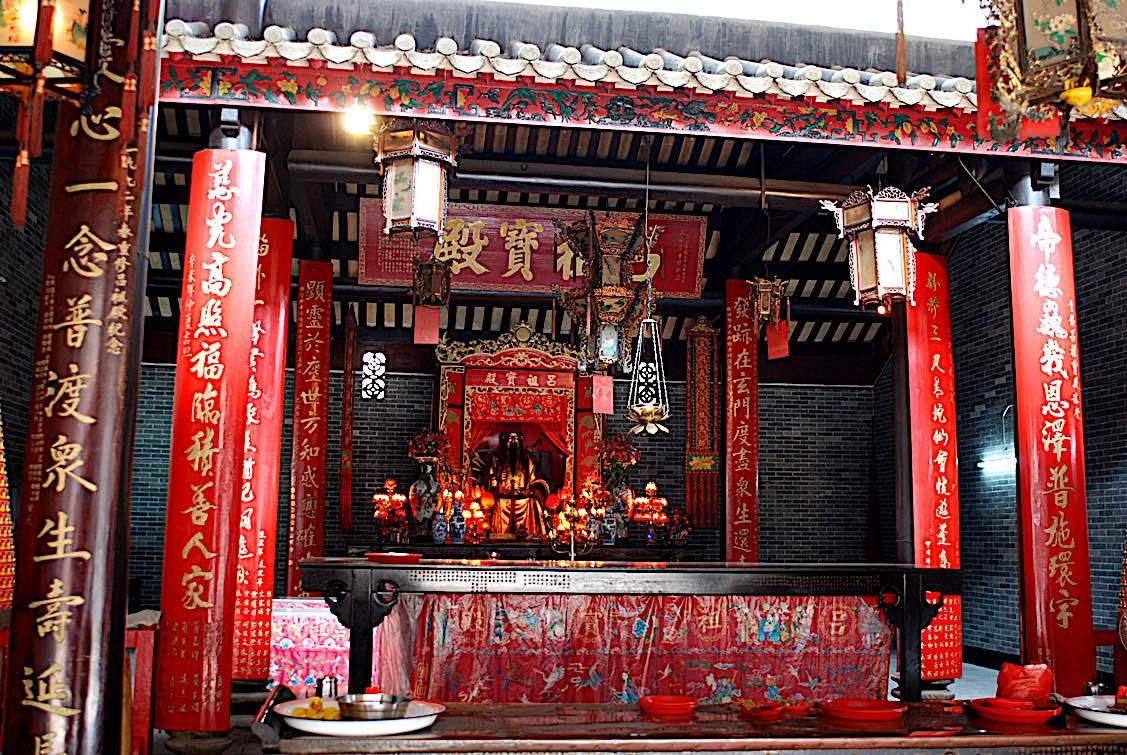
Living in Harmony with Dao — and Buddhist interconnectdness
As already mentioned, one of the main Daoist ideas is that one must live in harmony with the Tao, nature and the order of things. As the Venerable Pomnyun mentions, the Buddhist idea of interconnectedness ensures that Buddhists also have to live in harmony with nature and not disturb the order and flow of things. Thus, one could argue that by keeping with the idea of interconnectedness in the context of ecology. Whether Buddhism and Taoism influenced each other, or separately developed similar ideas, might be open to opinion; but it is clear they are two spiritual paths that can complement rather than contradict.
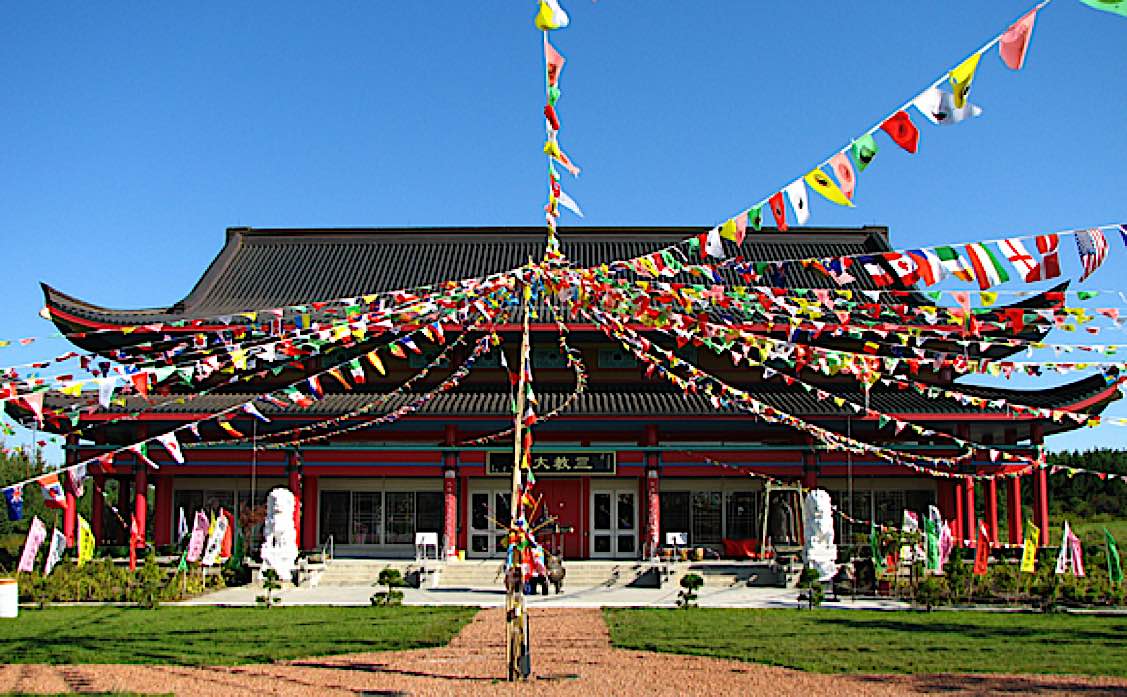
When comparing Buddhism and Taoism, it’s seems clear that both paths influenced each other. You can see this in the Buddhist/Daoist temples in China. It would be fair to say that Daoist influence certainly did not distort or corrupt the Buddha’s teaching — both traditions teach harmonious interconnectedness. Over the centuries, these cultural exchanges have enriched both the Buddhist tradition and Daoist traditions, a testament to the inclusiveness and tolerance of both paths (or Ways).
NOTES
[1]BBC Religions: What is the Tao? At https://www.bbc.co.uk/religion/religions/taoism/beliefs/tao.shtml [Accessed 18th July 2018]
[2]Will Buckingham et al ‘The Philosophy Book’ (Dorling Kindersley Limited, London, UK 2011). Pp. 24-25
[3]Ninian Smart ‘The World’s Religions’ (Press Syndicate of the University of Cambridge: Victoria, Australia 1989). P.120
[4]Ninian Smart ‘The World’s Religions’ (Press Syndicate of the University of Cambridge: Victoria, Australia 1989). P.122
[5]Paul Reps (editor) ‘Zen Flesh, Zen Bones: A collection of Zen and Pre-Zen Writings’ (Penguin Books: England, 1971). P.17
[6] Stephan Mitchell (trans) ‘Tao Te Ching: An illustrated Journey’ (Frances Lincoln Limited, London, UK 2013.) PP. 8-29
[7]Lewis Richmond ‘Emptiness: The Most Misunderstood Word in Buddhism.’ At https://www.huffingtonpost.com/lewis-richmond/emptiness-most-misunderstood-word-in-buddhism_b_2769189.html [Accessed 18th July 2018]
[8]Venerable Pomnyun ‘We are interconnected beings’ at https://www.huffingtonpost.com/venerable-pomnyun/we-are-interconnected-beings_b_8579002.html [Accessed 18th July 2018]
More articles by this author

Peacemaking Buddhism: importance of Ahimsa “Non-Harm” in Buddhism — “Nonviolence is the weapon of the strong.”

Dharma and the Tao: how Buddhism and Daoism have influenced each other; Why Zen and Taoism can be complementary
Search
Latest Features
Please support the "Spread the Dharma" mission as one of our heroic Dharma Supporting Members, or with a one-time donation.
Please Help Support the “Spread the Dharma” Mission!

Be a part of the noble mission as a supporting member or a patron, or a volunteer contributor of content.
The power of Dharma to help sentient beings, in part, lies in ensuring access to Buddha’s precious Dharma — the mission of Buddha Weekly. We can’t do it without you!
A non-profit association since 2007, Buddha Weekly published many feature articles, videos, and, podcasts. Please consider supporting the mission to preserve and “Spread the Dharma." Your support as either a patron or a supporting member helps defray the high costs of producing quality Dharma content. Thank you! Learn more here, or become one of our super karma heroes on Patreon.
Lee Clarke | Contributing Author
Author | Buddha Weekly
“I’m a Buddhist, Quaker, Humanist, existentialist and pacifist. Budding professor of religion. Love many subjects, bilingual third year uni student.”




